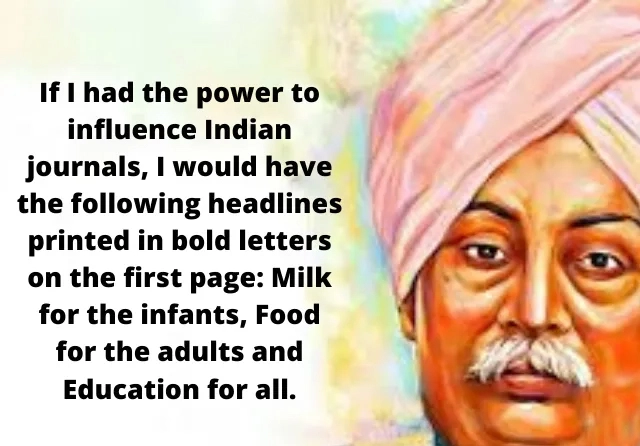Indian History
Lala Lajpat Rai
- 29 Jan 2022
- 4 min read
For Prelims: Lala Lajpat Rai, Indian Freedom Movement
For mains: Lala Lajpat Rai and his contributions in various spheres of Indian Independence movement.
Why in News
Recently, the Prime Minister paid tribute to Lala Lajpat Rai on his Jayanti.
- Lala Lajpat Rai’s birth anniversary is celebrated on 28th of january every year.
Key Points
- Birth:
- He was born on 28th January, 1865 in a small village named Dhudike in Punjab’s Ferozepur district.
- About:
- Lala Lajpat Rai was one of the greatest freedom fighters of India.
- He was also called ‘Punjab Kesari’ and 'Lion of Punjab'.
- He studied law at the Government College, Lahore.
- Was influenced by Swami Dayananda Saraswati and joined the Arya Samaj in Lahore.
- He believed that the ideals in Hinduism combined with nationalism will lead to the establishment of a secular state.
- Along with Bipin Chandra Pal and Bal Gangadhar Tilak, he formed the Lal-Bal-Pal trio of extremist leaders.
- He was also involved with the Hindu Mahasabha.
- He fought against untouchability.
- Contributions:
- Political:
- He joined the Indian National Congress (INC) and participated in many political agitations in Punjab.
- For his political agitation, he was deported to Burma without trial in 1907 but returned after a few months because of lack of evidence.
- He was opposed to the partition of Bengal.
- He founded the Home Rule League of America in 1917 in New York. In the US, he worked to get moral support for the Indian independence movement from the international community.
- He was also elected President of the All India Trade Union Congress.
- He supported the non-cooperation movement of Gandhi at the Nagpur session of the Congress in 1920.
- He protested against the Rowlatt Act and the Jallianwala Bagh massacre that followed.
- He was elected deputy leader of the Central Legislative Assembly in 1926.
- In 1928, he moved a resolution in the assembly refusing cooperation with the Simon Commission since the Commission had no Indian members.
- Social:
- He founded Hindu Relief movement in 1897 to provide help to the famine -stricken people and thus prevent them falling into the clutches of the missionaries.
- He founded the Servants of People Society in 1921.
- Literary:
- His important literary works include Young India, England’s Debt to India, Evolution of Japan, India’s Will to Freedom, Message of the Bhagavad Gita, Political Future of India, Problem of National Education in India, The Depressed Glasses, and the travelogue ‘United States of America’.
- Institutional:
- He founded several institutions and organizations such as Hisar Bar Council, Hisar Arya Samaj, Hisar Congress, National DAV Managing Committee.
- He was the editor of the Arya Gazette, which he had founded.
- He co-founded the Punjab National Bank in 1894.
- Political:
- Death:
- In 1928, he was leading a silent protest against the Simon Commission in Lahore when he was brutally lathi-charged by Superintendent of Police, James Scott. He died of injuries sustained a few weeks later.





